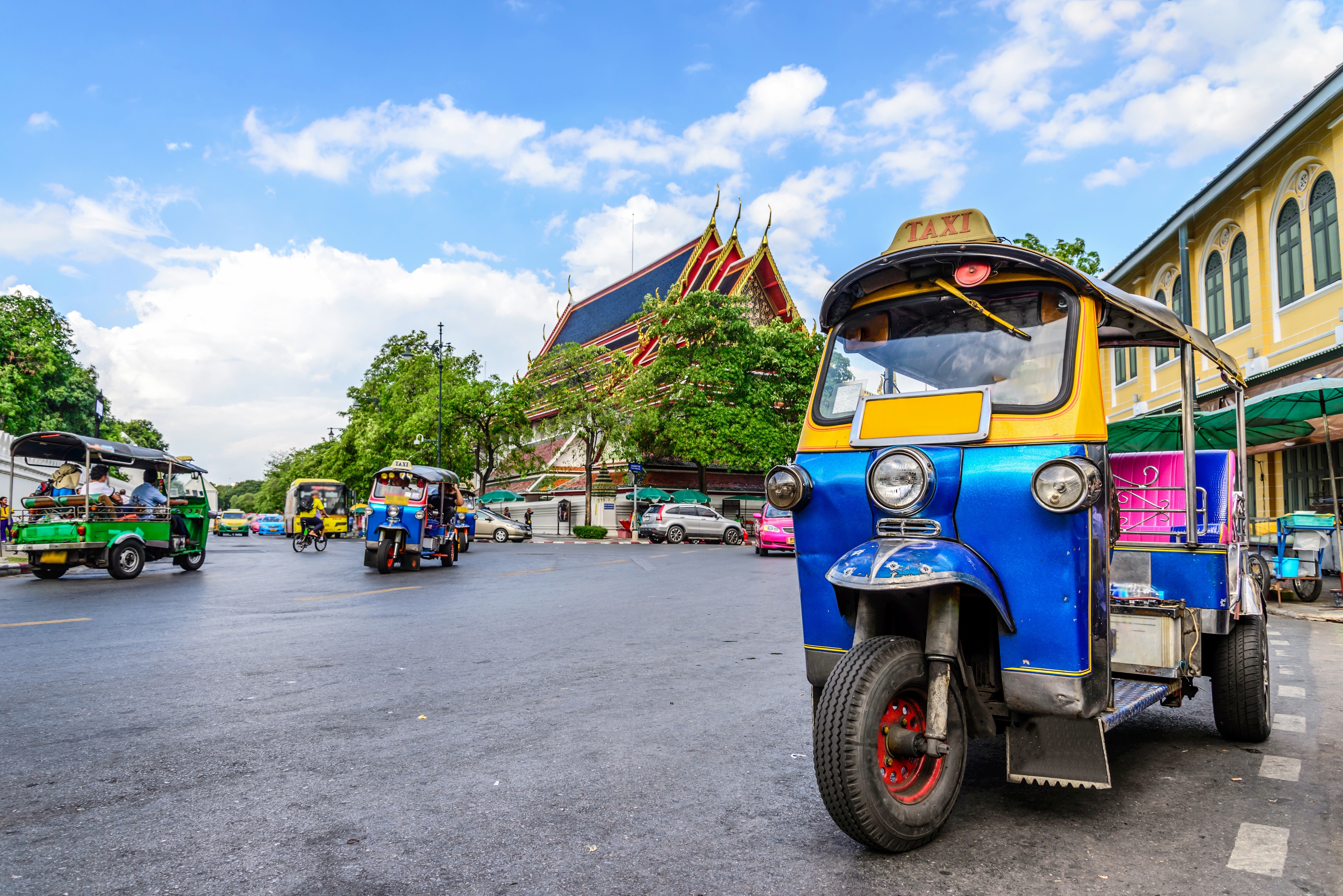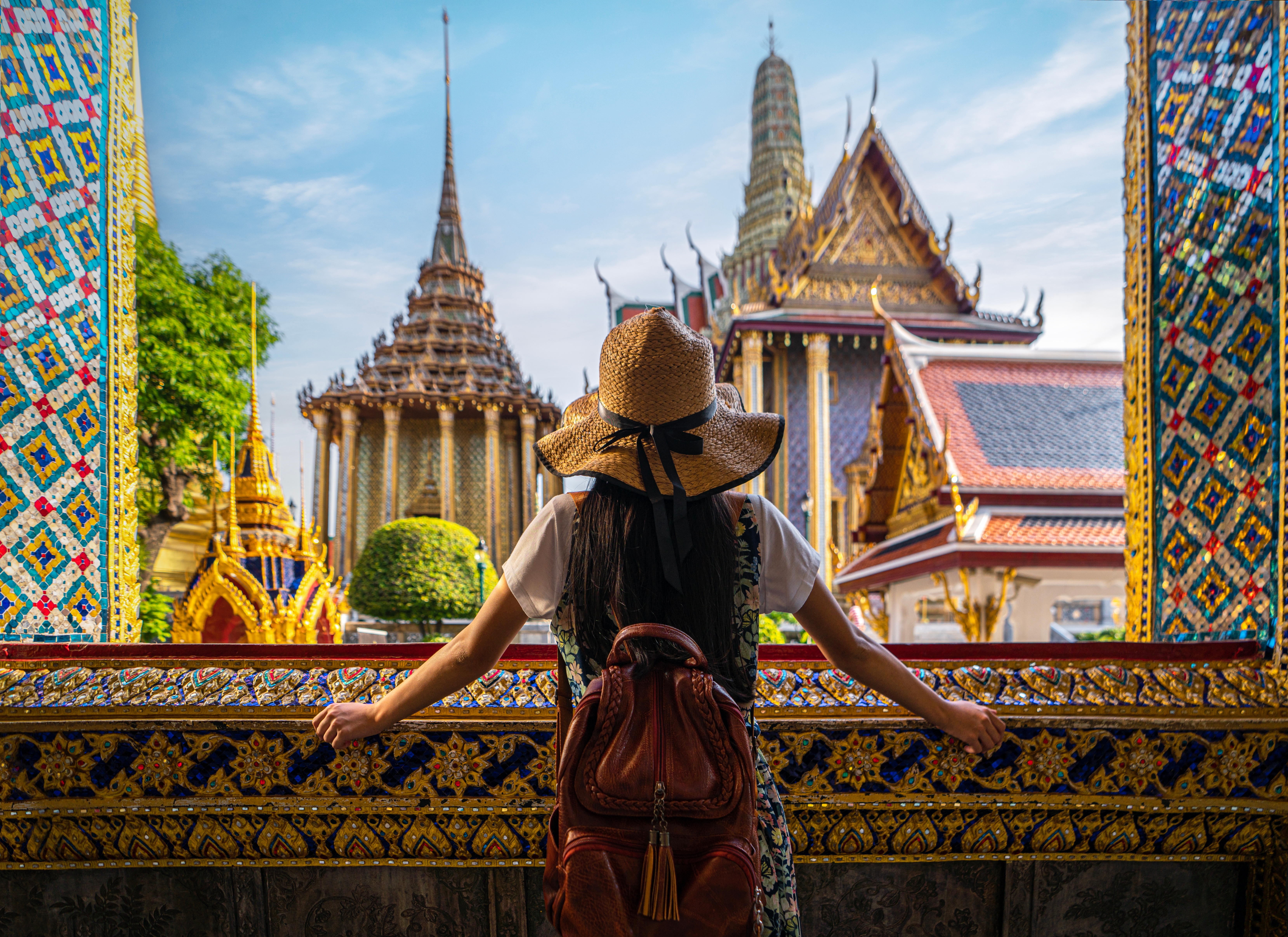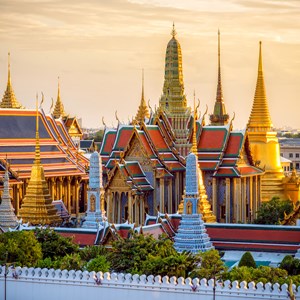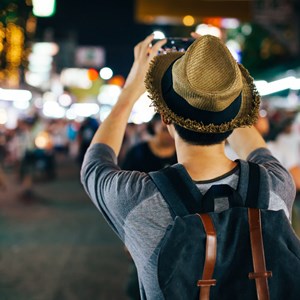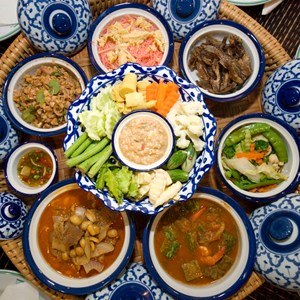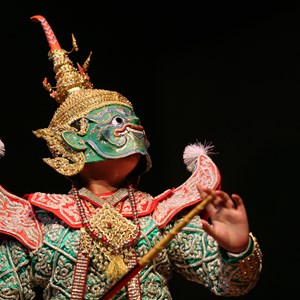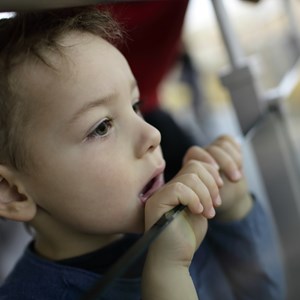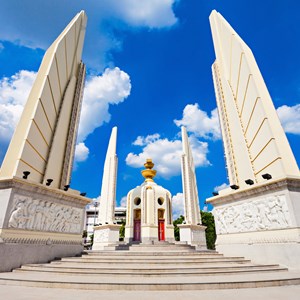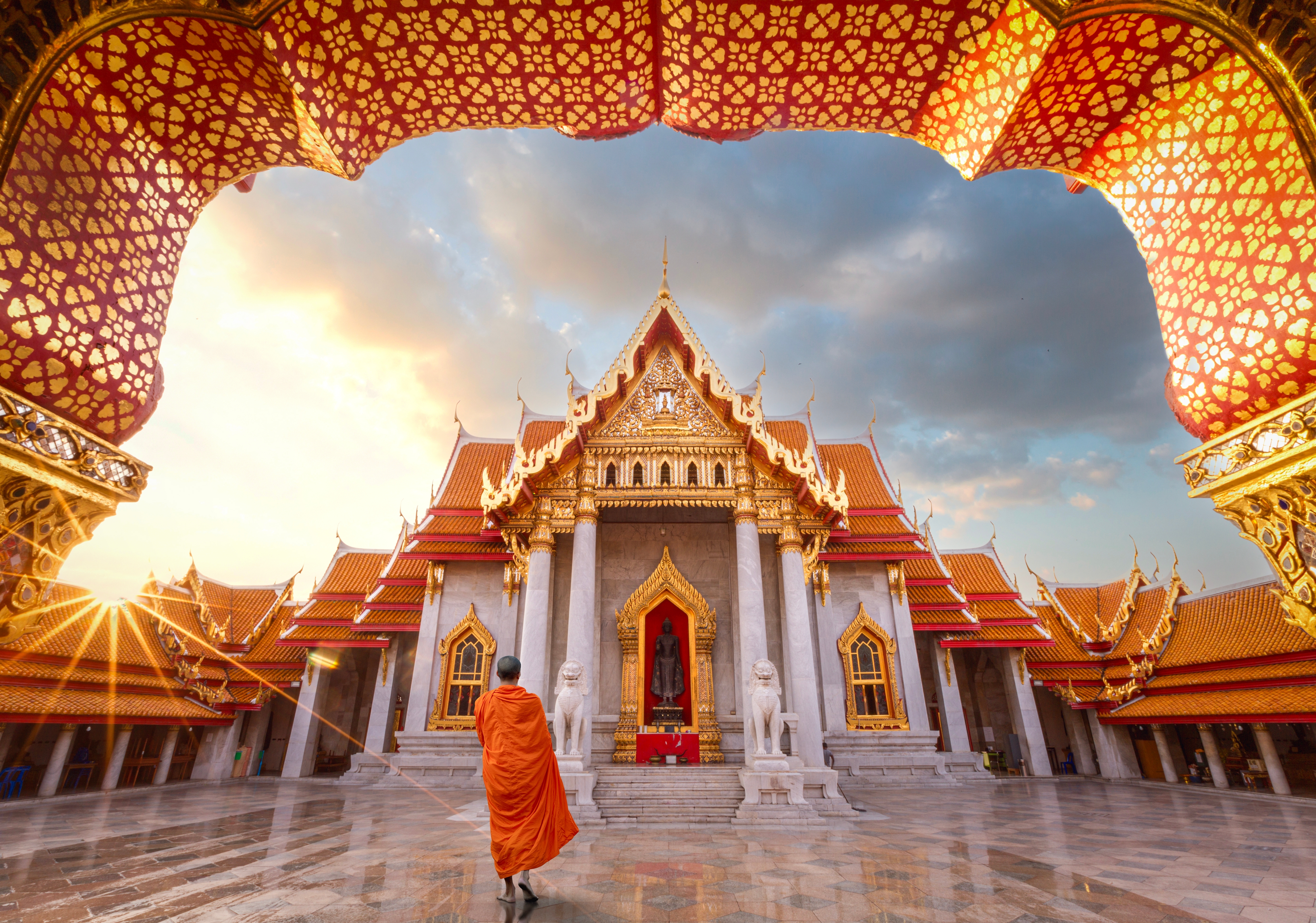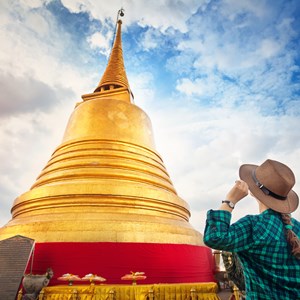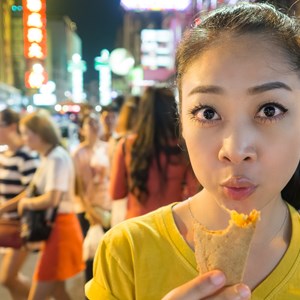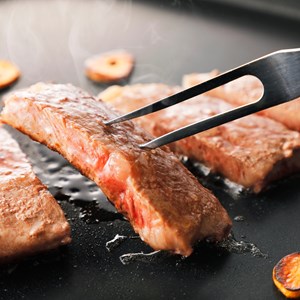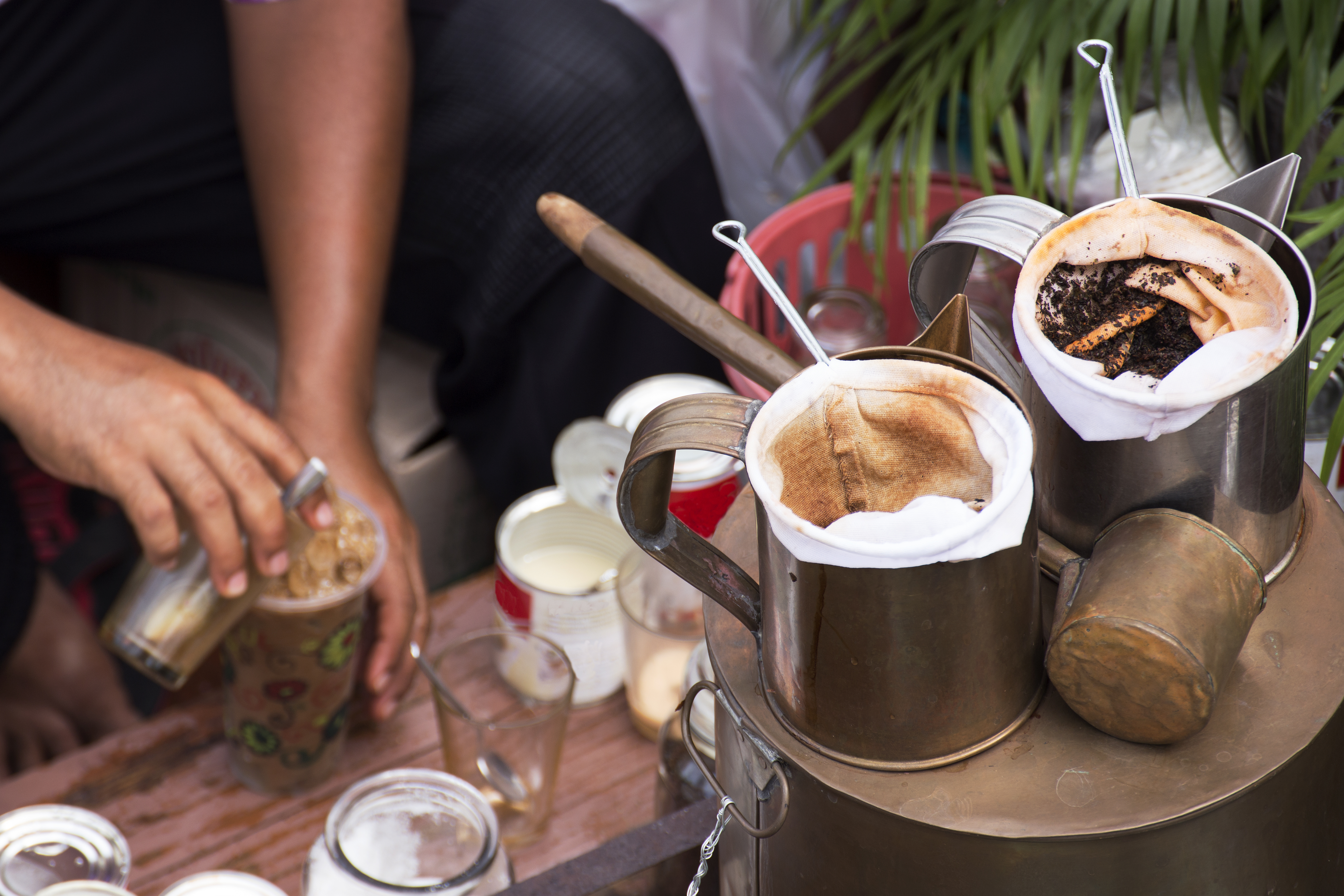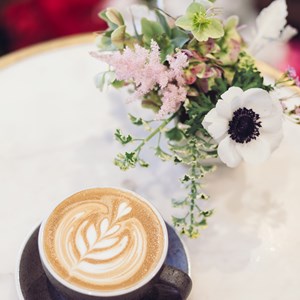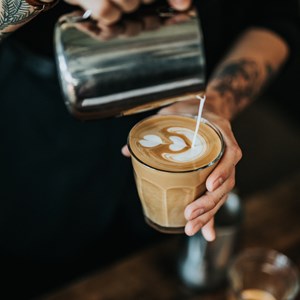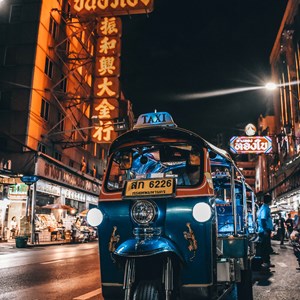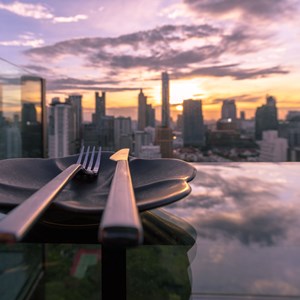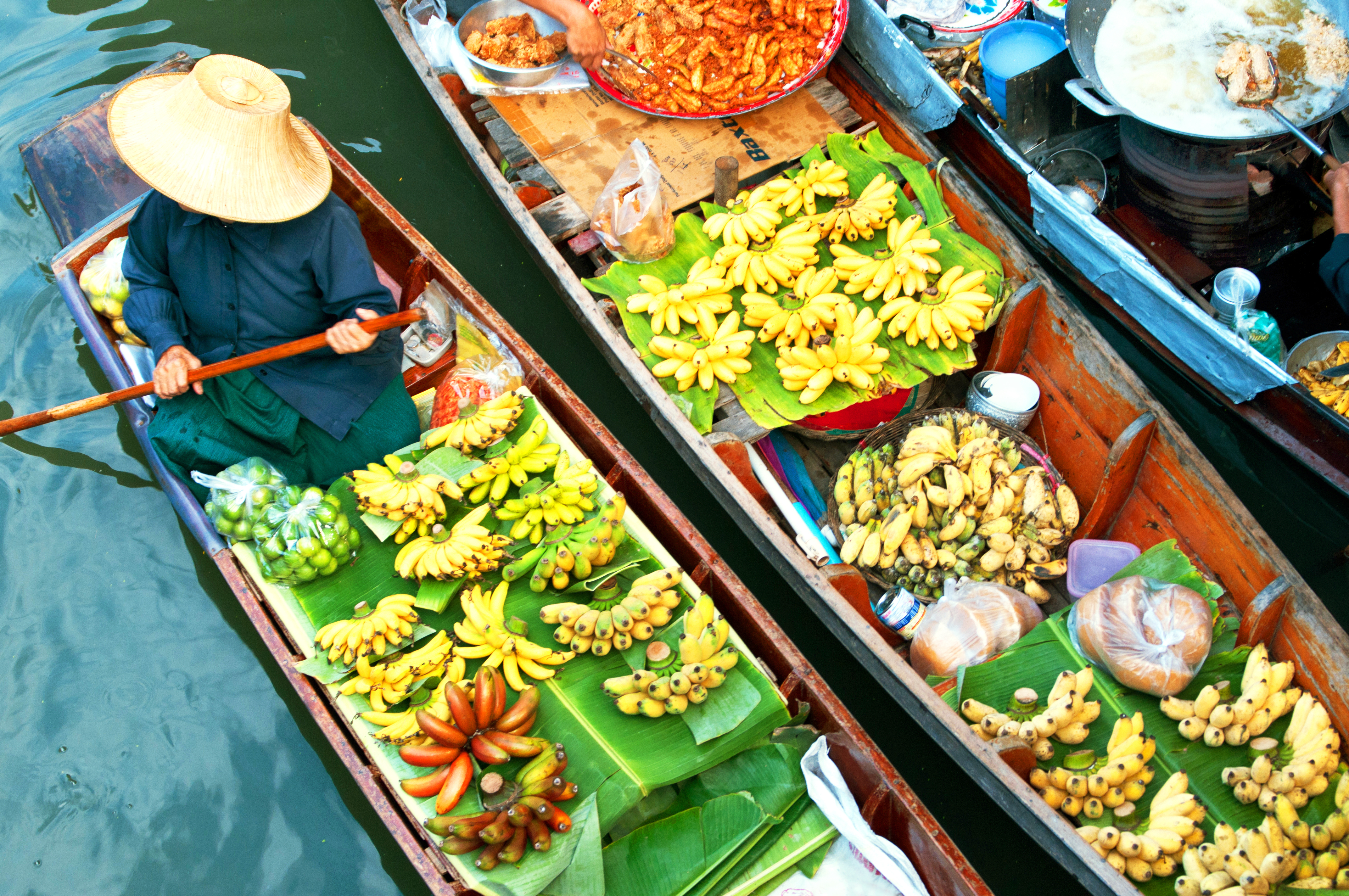

Dynamic, exotic, and richly cosmopolitan, Bangkok is one of Southeast Asia's most unique travel destinations. As a city of contrasts, this cultural epicentre entices millions of travellers each year with its glorious golden temples, bountiful markets, stunning scenery, and tantalising cuisine. Revel in the frenetic pace as you soak up the sights, shop until you drop, then tuk-tuk around town for a zesty slice of Bangkok’s indulgent and risqué nightlife.
The City
Arriving in Bangkok is like stepping straight into the city’s relentless rhythm. Sprawling across 50 districts, this is Thailand’s capital and the hub where culture, history, and modern life collide.
Known to locals as ‘Krung Thep’ — the City of Angels — Bangkok throbs and pulses with relentless heat and frantic pace as tuk-tuks zip along concrete boulevards and Skytrains zoom overhead. Yet, within this dynamism, each district has its own character.
Dusit is the political heart, full of grand architecture and quiet gardens, while Rattanakosin, the Old Town, holds the essentials: the Grand Palace, Wat Pho, and Sanam Luang. Glitzy Siam Square carves the city's commercial core with an array of shops, malls, and boutiques. Chinatown and Pahurat are a feast of flavours and markets, while Sukhumvit comes alive at night with restaurants, bars, and clubs. Khaosan Road remains a must for budget travellers and revellers, buzzing with street food, vendors, and neon-lit nightlife.
Do & See
Bangkok can be a lot to take in—food sizzling on every corner, monks slipping quietly through temple gates, neon signs, tuk tuks weaving through traffic, and markets that seem to spill into the street. It’s messy and exciting, and that’s what makes it worth exploring. You’ll come across grand palaces, street shrines, museums, and enough temples to fill your days.
Temples
Bangkok is dotted with temples — grand and ornate, humble and serene — each offering a glimpse into the city’s spiritual heart. Temples are more than tourist sights; they are an integral part of daily life in Bangkok, where locals come to pray, make offerings, and celebrate festivals.
With hundreds of 'wats' spread across the Thai capital, there’s a staggering variety to explore. For that reason, we’ve handpicked the ones truly worth your time — whether it’s for their unique architecture, dazzling murals, breathtaking Buddha statues, or the lively rituals that bring these sacred spaces to life.
When visiting a temple, remember to dress respectfully: shoulders and legs should be covered, and shoes removed before entering the main halls.
Dining
If nothing else, Bangkok is the epicentre of Southeast Asia’s culinary scene, a city where flavour rules and variety is endless. From world-famous street classics like Pad Thai, fiery tom yum soup, comforting bowls of boat noodles, and sweet endings of mango sticky rice, eating here is as much a cultural experience as it is a daily pleasure.
The beauty of Bangkok is that you don’t need to spend much to eat well — some of the city’s most memorable meals come from sizzling woks on the pavement. At the same time, Bangkok’s fine dining scene is world-class, with Michelin-starred restaurants pushing the boundaries of Thai cuisine. To capture every shade of the city’s food culture in one list would be impossible, but here’s a look at some of Bangkok’s essential dining districts and a few standout spots worth seeking out.
Cafés
Bangkok’s café scene is constantly evolving, a reflection of the city’s mix of tradition and modernity. Coffee has become increasingly popular, and the streets are dotted with an eclectic mix of cafés—from sleek, minimalist spaces to cosy, vintage-inspired hideaways. While traditional Thai iced tea remains a favourite, the city’s urban trend leans firmly towards coffee, with both locals and travellers drawn to these spots for expertly brewed cups, creative flavours, and a chance to pause amid the city’s constant hum.
Bars & Nightlife
When the sun comes down, Bangkok is well-versed on how to have a seriously good time. A city famous for its wild nightlife, Bangkok’s bars, clubs, taverns, and lounges light up the streets, bustling and bursting with action. Partiers and revellers will rejoice with its abundance of bars, rooftop hangouts, neon-lit streets, and lively night markets.
Shopping
Have we mentioned that Bangkok is a veritable shoppers’ paradise? You’ll find pretty much everything and anything you could ever want, need or desire in this town - from fashion to electronics, novelties and crafts. Hit up and indulge in Bangkok’s enormous array of modern shopping hubs, contemporary stores, cosmopolitan boutiques and exotic, labyrinthine markets for every conceivable consuming penchant.
Tourist Information
Best Time To Visit
Bangkok can be visited year-round, but timing your trip can make all the difference. The city’s hot season, which goes from March to May, can be quite intense, and the rainy season, running from June to October, brings frequent showers. So, the most comfortable months for visiting Bangkok are between November and February, when the weather is cooler and less humid. This period also coincides with Loi Krathong, the enchanting festival of lights, when illuminated baskets float on waterways and sky lanterns drift overhead.
And if you’re seeking to experience another local celebration, April is the time for Songkran, the world-famous Thai New Year, when the city turns into a playful water fight.
Address:
Email:
Phone:
Website:
More Information:
Passport/Visa
Visitors to Thailand typically need a passport with at least six months’ validity, a visa depending on their nationality, and a completed Thailand Digital Arrival Card (TDAC), which must be submitted within three days before arrival. Citizens of over 90 countries can enter visa-free for 30–60 days, while others may apply online for an e-Visa or obtain a Visa on Arrival for shorter stays.
As requirements can change, always confirm the latest rules with the Royal Thai Embassy or Consulate before travelling.
Address:
Email:
Phone:
Website: www.thaiembassy.com/thailand-visa/thailand-visa-services
More Information:
Suvarnabhumi International Airport (BKK)
Suvarnabhumi International Airport, situated about 30 kilometres east of central Bangkok, is Thailand's largest and most modern airport, serving as a primary gateway for international travellers. Travel times to the city centre range from 30 to 60 minutes, depending on traffic.
The airport is well connected to Bangkok via multiple transport options. The Airport Rail Link offers a fast connection to Phaya Thai station in about 30 minutes, with easy transfers to the BTS Skytrain. Taxis and ride-sharing services are available 24/7, while airport buses link BKK to key destinations, including Sukhumvit, Silom, and Khao San Road.
Address: Suvarnabhumi International Airport
Email:
Phone: +66 2 132 1888
Website: https://suvarnabhumi.airportthai.co.th
More Information:
Don Mueang International Airport (DMK)
Bangkok’s first airport now mainly serves short-haul flights for budget airlines and domestic routes. It is located 24 kilometres north of central Bangkok, with travel times to the city centre typically ranging from 30 minutes to an hour, depending on traffic.
Travellers can reach the city via several transport options. The SRT Dark Red Line train links DMK to Krung Thep Aphiwat Central Terminal in around 17 minutes, with connections to the MRT Blue Line. Air-conditioned buses A1, A2, A3, and A4 serve destinations including Mo Chit, Victory Monument, Lumphini Park, and Khao San Road. Taxis and ride-sharing apps provide a convenient alternative for direct journeys.
Address: Don Mueang International Airport
Email:
Phone: +66 2 535 1192
Website: https://donmueang.airportthai.co.th
More Information:
Public Transport
Despite being known as a chaotic city, navigating Bangkok is straightforward thanks to its efficient public transport system, ideal for tourists looking to explore the Thai capital. The BTS Skytrain (an elevated rapid transit system) and MRT (a network of underground lines) are the most popular choices, offering fast, air-conditioned travel above and below ground.
The BTS runs along the Sukhumvit and Silom lines, connecting key areas such as Siam, Asok, and the riverside, while the MRT’s lines cover extensive routes linking cultural sites and commercial districts. Both systems are user-friendly, with clear English signage.
For the BTS and Airport Rail Link, tourists can use the Rabbit Card, a rechargeable contactless smart card that makes hopping on and off easy. On the MRT, travellers can buy single-journey tokens at stations, use a stored-value card, or pay contactless with VISA or Mastercard.
Address:
Email:
Phone:
Website: www.bts.co.th/eng
More Information: www.transitbangkok.com/mrt.html
Taxi
Finding a taxi in Bangkok is easy, with thousands of brightly coloured vehicles—typically green-and-yellow or pink—roaming the streets. Both operate on meters, ensuring you pay a fair rate for your journey. For added convenience, popular ride-hailing apps like Grab and Bolt allow you to book a ride quickly, with fixed pricing and cashless payment options.
Another way to navigate Bangkok's bustling streets is by the iconic tuk-tuks, the colourful three-wheeled motorised rickshaws. These vibrant vehicles offer a more adventurous alternative to taxis, often weaving through heavy traffic with ease. While tuk-tuks don’t use meters, fares can be negotiated with the driver before starting your journey. For short trips, they can be quicker and more convenient than traditional taxis.
Address:
Email:
Phone:
Website:
More Information:
Post
Post offices in Bangkok generally operate Monday to Saturday, with major branches open into the evening. They provide a full range of services, including domestic and international mail, parcel delivery, express services, and postal banking. Many also offer bill payments, money transfers, and packaging materials. Bangkok’s post offices are easy to spot by their bright red signage and the Thailand Post logo featuring an abstract paper aeroplane design.
For travellers, branches in the Sukhumvit area are especially convenient, given their central location near popular hotels and BTS stations.
Address:
Email:
Phone:
Website:
More Information:
Pharmacy
In Bangkok, Boots and Watsons dominate the pharmacy scene. Boots, well-known to UK travellers, operates over 230 outlets across Thailand, offering a wide range of health and wellness products along with expert pharmacy services. Watsons, Asia's leading health and beauty retailer, boasts over 700 stores in the country, providing an extensive selection of health and beauty items. Both chains ensure convenient access to essential medical and personal care products throughout the city.
Address: Boots (CentralWorld) - 999/9 Rama I Road, Pathum Wan, Bangkok
Email:
Phone: +66 2 252 1280
Website:
More Information:
Telephone
Country code: +66
Area code central Bangkok: 2
Address:
Email:
Phone:
Website:
More Information:
Electricity
Thailand runs on 230 volts at 50 Hz. Plugs can vary: you’ll see Type C (two round pins like in Europe), Type A and B (flat pins, like in the U.S.), and Type O (three round pins in a triangular layout).
Address:
Email:
Phone:
Website:
More Information:


